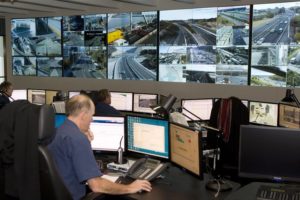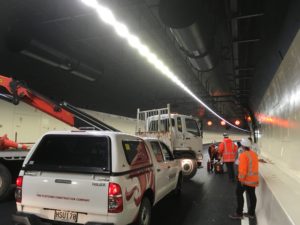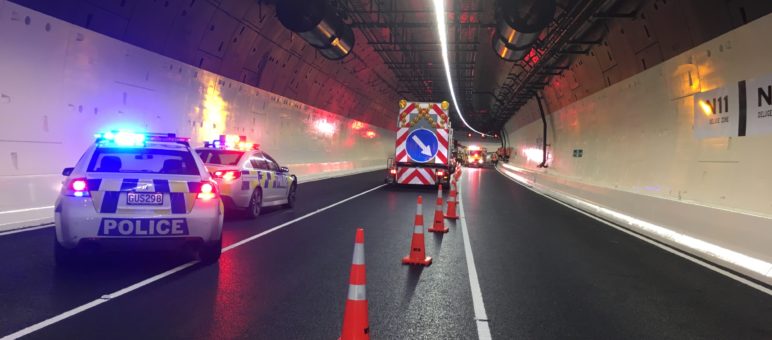A multi vehicle crash inside Auckland’s Waterview Tunnel is something no one wants to be faced with. But, it’s a scenario that tunnel operators and emergency services needed to be confident they could deal with prior to the public opening.
Kestrel’s John Hamilton was part of the team tasked with finding out how robust the tunnel’s emergency procedures were during commissioning.
“We wanted to design and run an exercise that involved the tunnel operators and all three emergency services. And we needed to do it in a way that provided an element of surprise.”
John says the tunnel cameras were taken off-line while the ‘crashed’ cars, trucks and ‘victims’ were put into place and once everything was ready, the cameras were put back online, and the operations centre was confronted with the scenario.
Testing procedures
“We were looking to see if the procedures for how Fire, Police and Ambulance got into the tunnel and did what needed to be done actually worked.”
John says up to 120 people were involved in the exercise creating as realistic a scenario as possible.
Part of the response involved testing out some of the state of the art emergency response features installed in the tunnel.
“Even though the tunnel is 2.4km long and obviously underground there’s a system that allows radios and telephones to be used inside the tunnel. There’s also a feature where your car radio can be cut into by the operations centre, so they can give you updates on any incidents in the tunnel and instructions on where to go or what to do.”
John says the tunnel can be pressurised by fans to stop the spread of smoke, which came in very handy when the truck ‘caught fire’.
“There is also a deluge system where they can pump in a fine mist of water to put our fires – unfortunately we weren’t allowed to play with that feature,” says John.
Another feature is that the computer system monitoring the tunnel detects abnormal movements such as stopped vehicles and pedestrians and supplements heat and smoke detectors so that any unusual activity raises the alarm in the operations centre.
“We were really impressed with the exercise and things went according to plan. We were able to identify some areas for improvement, but these were things were minor refinements like standardising procedures across all of Auckland’s tunnels.”
John says the emergency services had all been involved in developing the procedures so were keen to take part and be prepared ahead of any real-life incidents.
“I was really pleased by the level of commitment by the tunnel operating staff and emergency services. All of the procedures were there but the exercise was the final link in the chain, a chance to test out the human factor and make sure that what was planned would actually work.”


